
Universidade Fernando Pessoa
Porto, Portugal

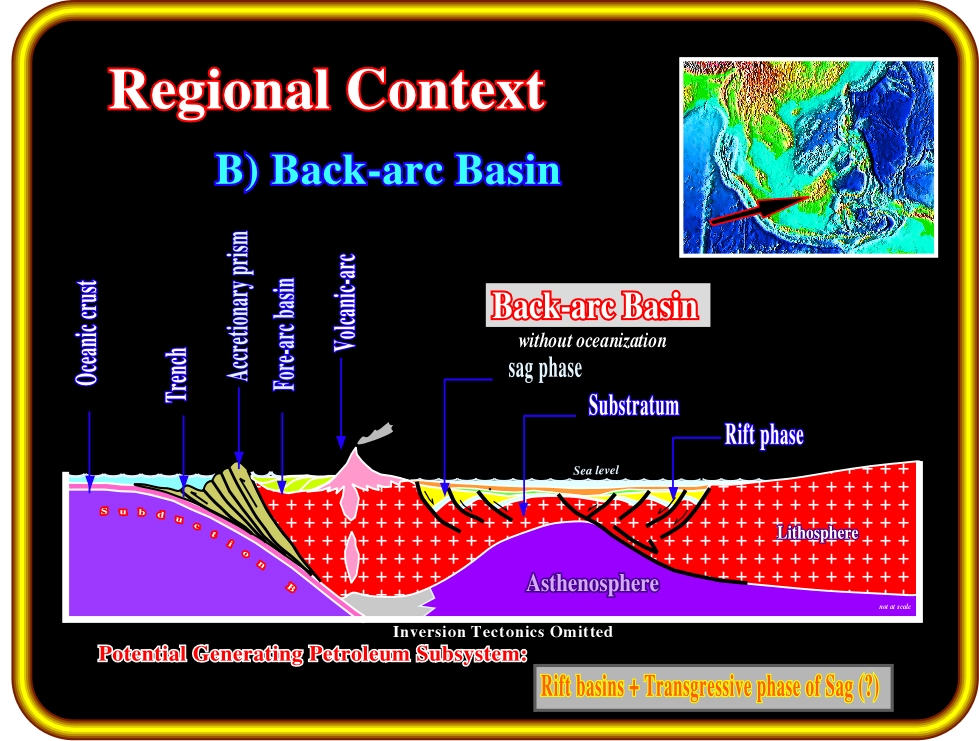
Plate 10- Although quite different individually, back-arc basins show many similarities which allow an a priori assessment of their hydrocarbon potential. The Bally’s classification suggests to consider separately back-arc basin without and with oceanisation. Back-arc basins with oceanisation develop new oceanic crust and non-Atlantic divergent margins. A rifting phase, with differential subsidence starts the formation of a back-arc basin. Then such a subsidence is replaced by a regional thermal subsidence which onset the sag phase.
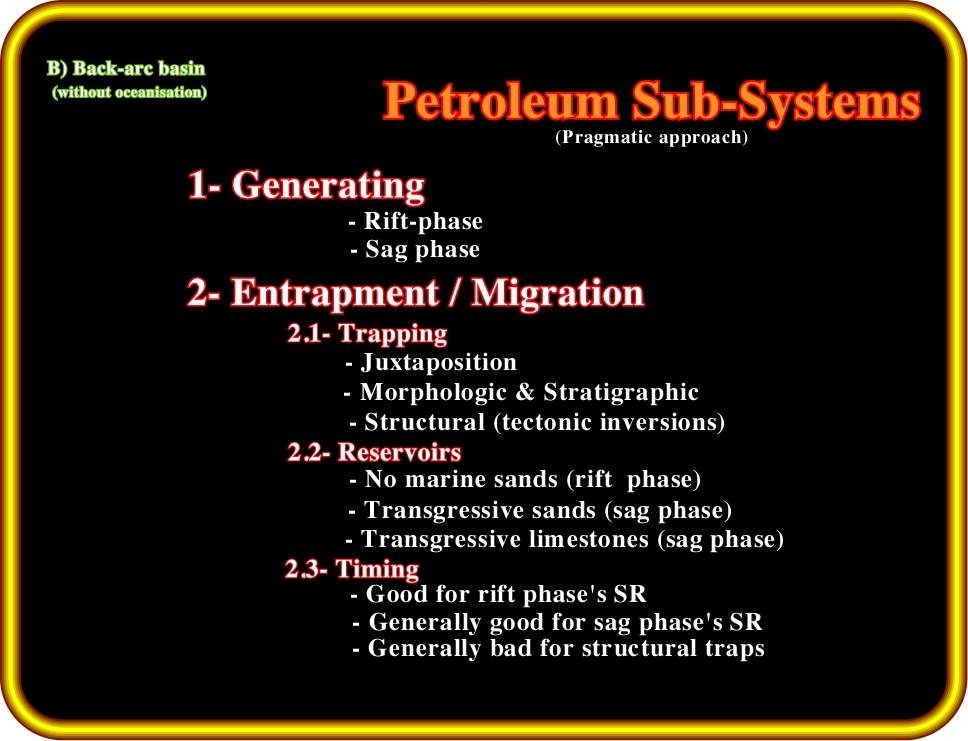
Plate 11- Back-arc basins without oceanisation are characterized by: (i) A generation petroleum sub-system mainly localized in the half-grabens of the rifting phase. However, as will see later, in particular cases, humic source rocks are also be present in the sag phase, (ii) Traps are morphological, as the backstepping carbonates deposited during the sag phase, or morphological by juxtaposition, (iii) Non-marine sandstones of the rift phase constitutes the potential reservoirs as well as regressive sands or carbonates deposited predominantly during the sag phase, (iv) Migration timing is favorable except when the basin is tectonically inverted.
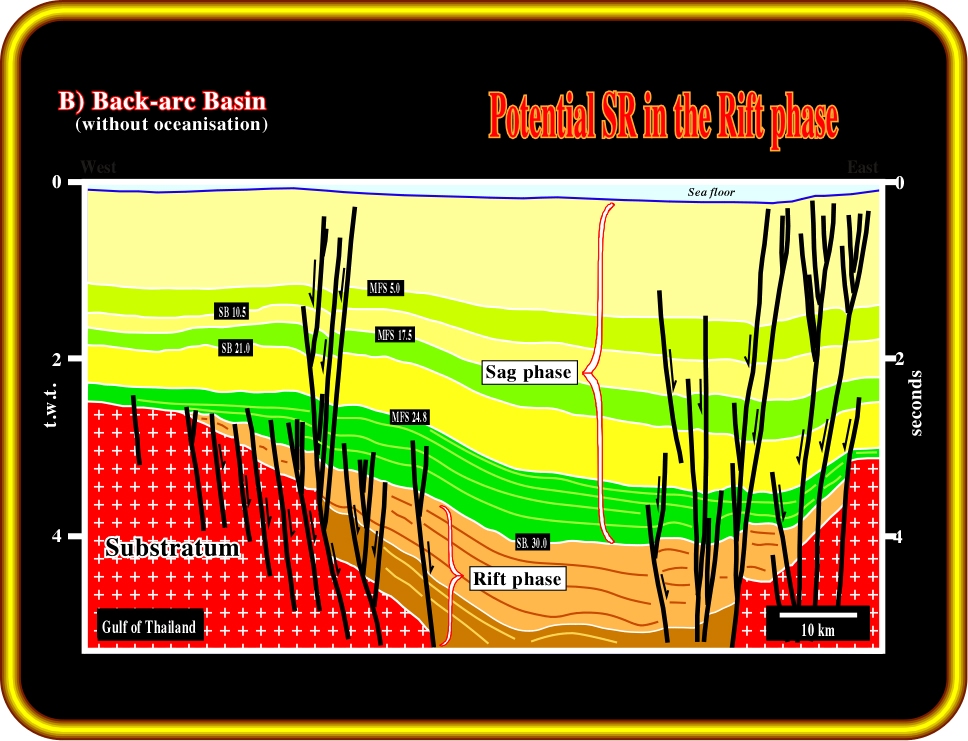
Plate 12- Here is an interpretation of a seismic line located within the Meso-Cenozoic megasuture across the Gulf of Thailand. This tentative interpretation illustrates the previous concepts: (i) At the base, the rifting phase, where a hydrocarbon generating petroleum subsystem might be present, (ii) At the top, the sag phase where potential source rocks, reservoirs and traps could exist, (iii) Carbonates could be in the transgressive interval (in green) and sandstones in the regressive episode of the sag phase, (iv) Traps are morphologic by juxtaposition, that is to say, throws of the faults, reservoir and seal thickness (lateral and vertical) are critical for the size of the trap. Taking into account the location of such basin, within the Meso-Cenozoic megasuture, that means in a global compressive context, normal faults will sooner or later be reactivated into reverse faults creating large inverted structures.
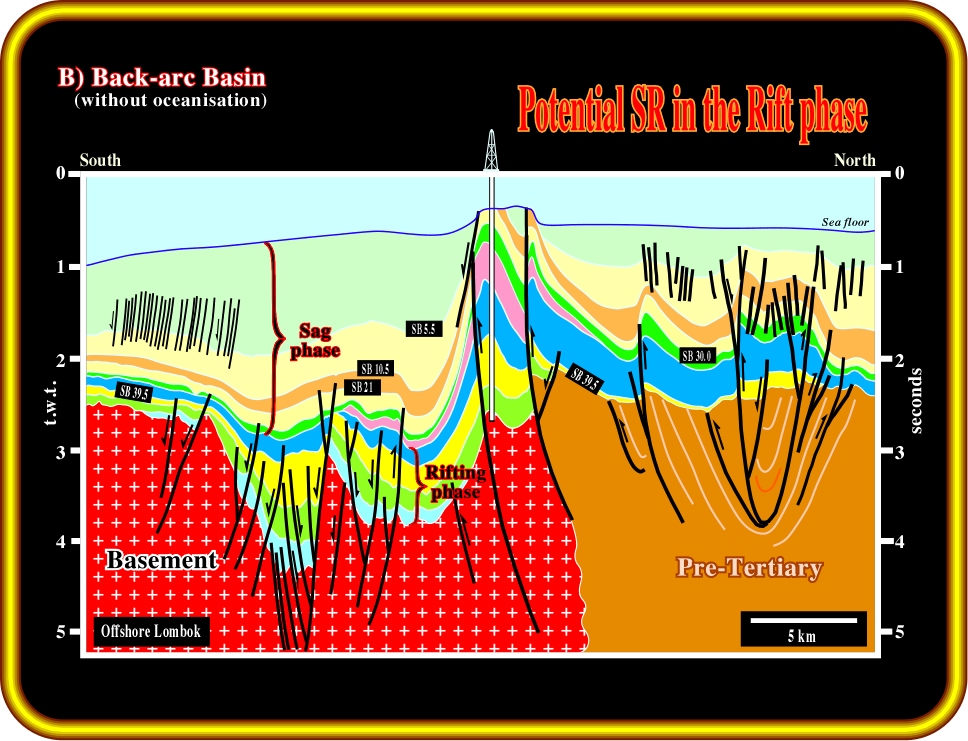
Plate 13- This example is taken in the overthrusting continental plate of the Benioff subduction zone of Java northward of Lombok Island. The back-arc basins are here tectonically inverted, particularly the rifting phase (rift-type basin). Large structures and four way dip traps, what we call structural traps, appear. They could be charged if the timing of hydrocarbon migration is posterior to the age of the inversion. Which is often unlikely. However, explorationists should not forget dismigration. Let’s see now what happens in a back-arc basins when the extension is big enough to breakup the lithosphere and create a marginal sea, i.e. oceanisation.
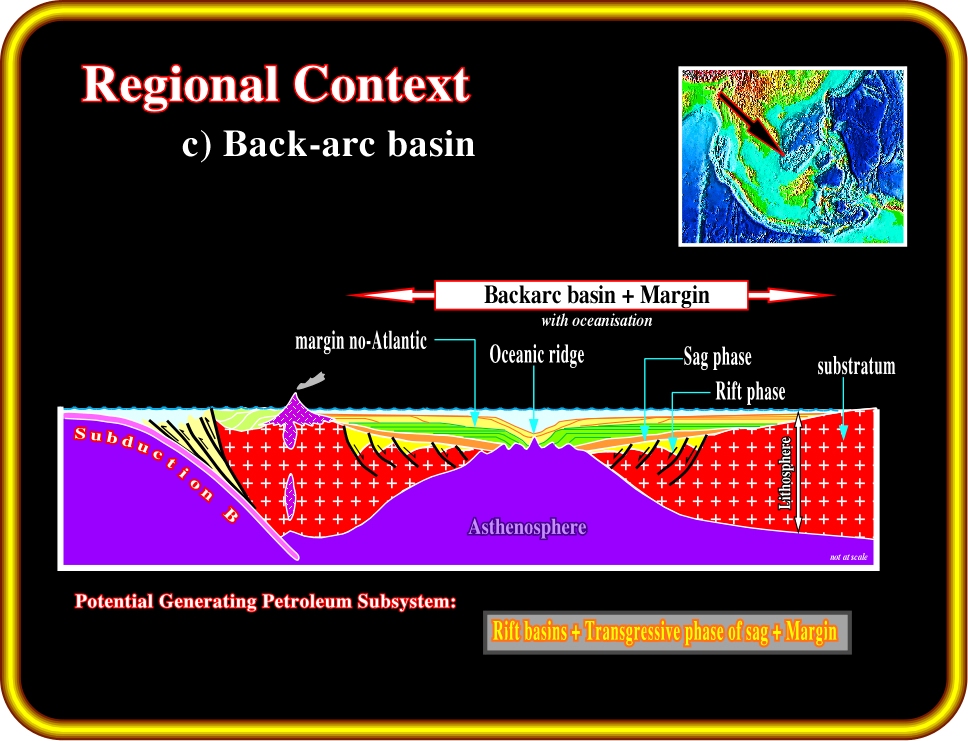
Plate 14- As shown above, in a tectonic context globally compressive, new oceanic crust is formed and a non-Atlantic divergent margin is deposited above the sag phase of the back-arc basin. Depending on the thickness of the divergent margin, the potential generating petroleum subsystem may be quite different from that of a back-arc basin without oceanisation.
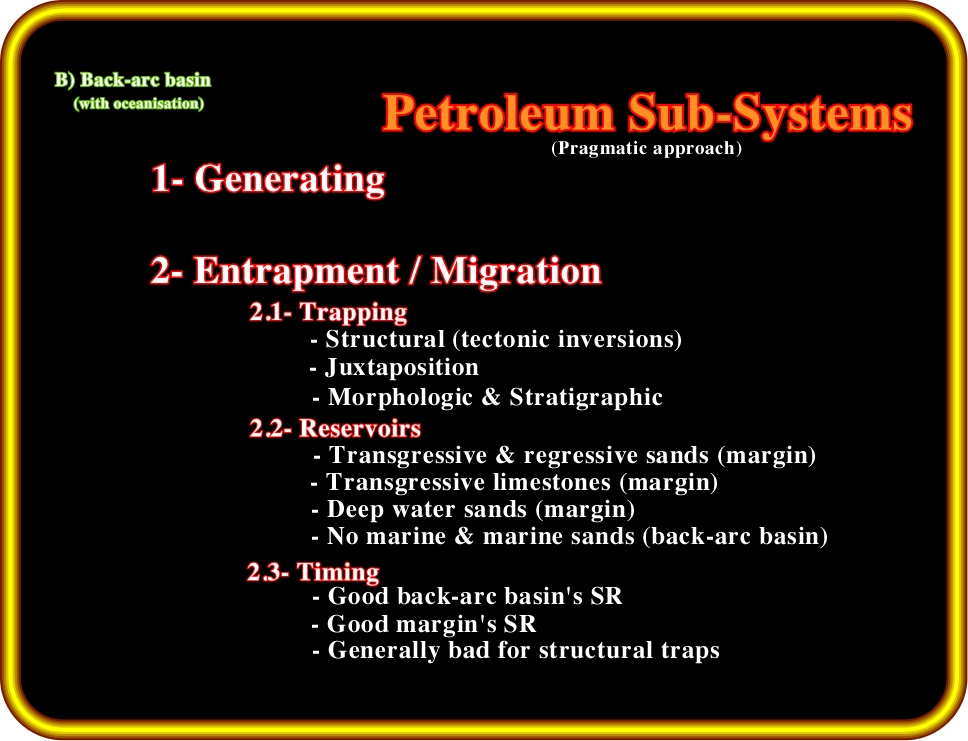
Plate 15- When the non-Atlantic margin is sufficiently thick: (i) A new hydrocarbon generating petroleum subsystem may appear either marine or non- marine, (ii) Good sandstones reservoirs may be present in the regressive phase of the margin either as platform deposits or deepwater fans and (iii) Structural traps of significant size, formed in conjunction with the tectonic compression may constitute good exploration targets.
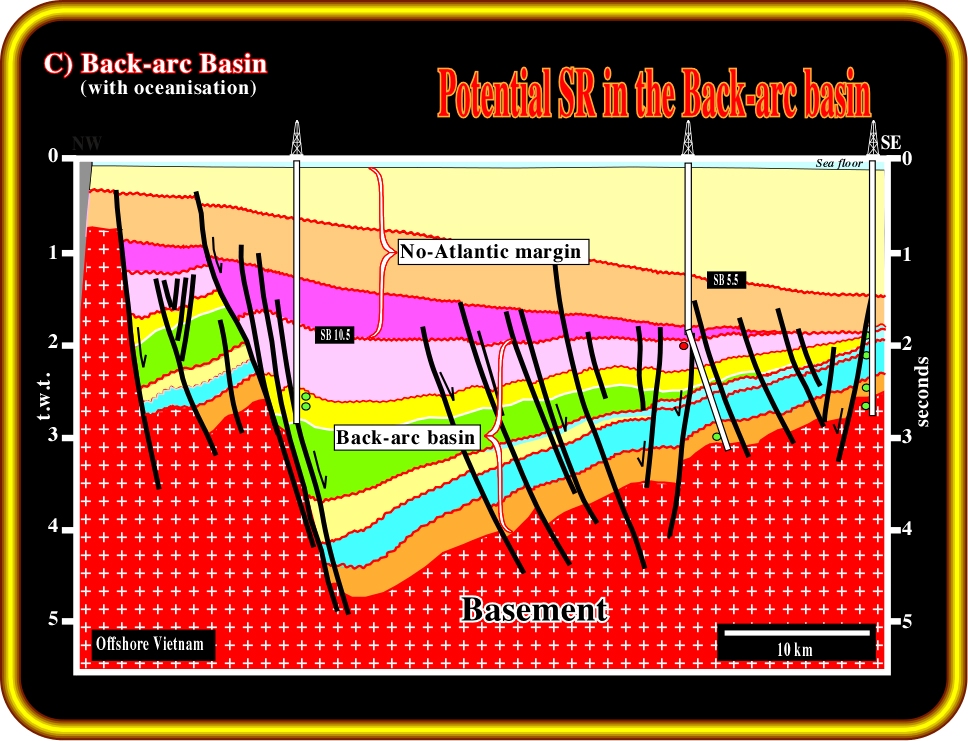
Plate 16- We have two examples to show. Our first example comes from offshore Vietnam. It illustrates the case a back-arc basin with oceanisation and deposition of a thin non-Atlantic margin. So thin that it does not change the hydrocarbon parameters of a conventional back-arc basin. In addition, the tectonic inversions are not too important. As depicted, this tentative geologic interpretation suggests: (i) Above a Paleozoic substratum, the back-arc basin, (ii) The back-arc basin, which is prior to the breakup of the lithosphere, is composed by a rift and a sag phases where the hydrocarbon parameters are located, (iii) The proximal section of the non-Atlantic divergent margin, which was deposited after the breakup, (iv) The generating petroleum subsystem, which is composed by lacustrine organic shales, is located within the rift phase. It is probably overmature in part but source rocks of the sag phase can also contribute to the sourcing, (v) The potential reservoirs (deltaic sandstones) are located within the sag phase of the back-arc basin, (vi) The traps are mainly morphologic by juxtaposition and they are in the back-arc basin. In other words, the sediments of the margin contribute only to the burial and the maturation of the organic matter of the source rocks of the back-arc basin.
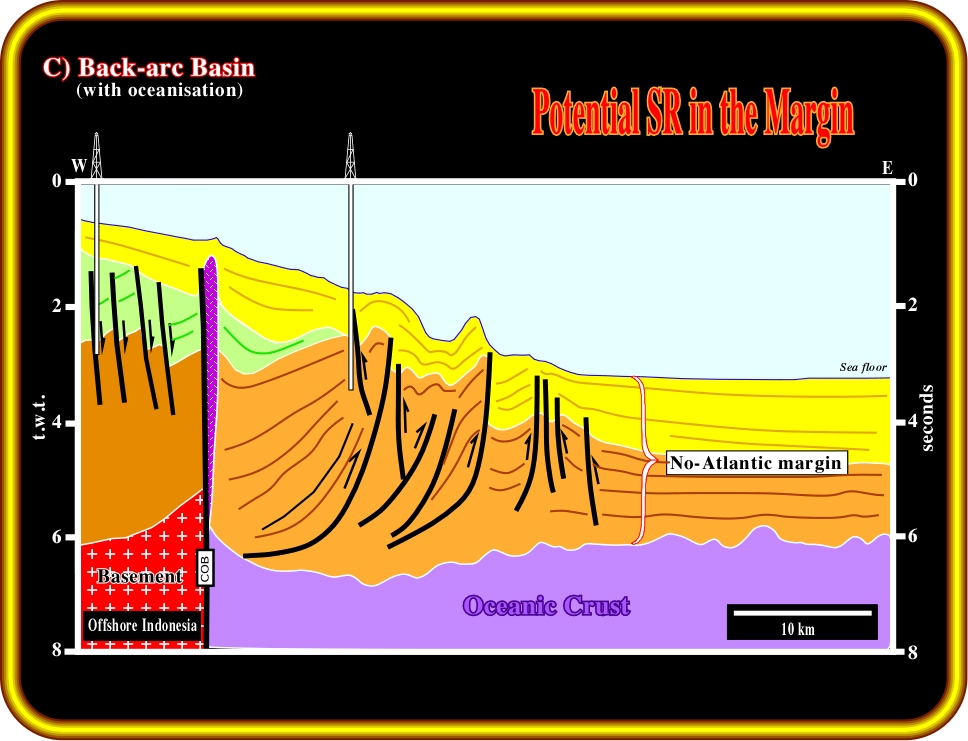
Plate 17- Our last example comes from the Strait of Makassar. It illustrates the opposite case to the offshore Vietnam. The thickness of the non-Atlantic margin is so big that all hydrocarbon parameters are associated with it. The proposed geologic interpretation shows: (i) The COB, i.e. the limit between the continental an oceanic crust, (ii) The regressive sedimentary phase of the margin, (iii) Some transgressive episodes (in green) within the regressive sedimentary phase, (iv) Compressive structures induced by transform fault movements or push ridge stresses, (v) A proximal generating petroleum subsystem associated with coal beds and platform organic shales, and distal one composed by deep prodelta shales, (vi) Potential shallow water sands and carbonates reservoirs, in proximal area and deep water turbiditic sandstones in the deep offshore, (vii) Morphologic traps by juxtaposition, in conventional offshore and structural four-way dips and morphological in deep offshore. Now, we like to show with some more details two Total operated discoveries which illustrate what have been a successful pragmatic approach in hydrocarbon exploration.
to continue press
next
Send E-mail to carloscramez@gmail.com with questions or comments about this conference.
Copyright © 2000 CCramez
Last modification:
August, 2014